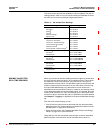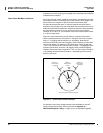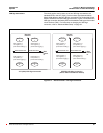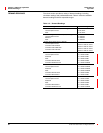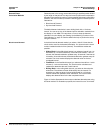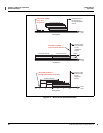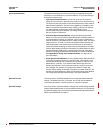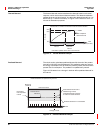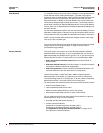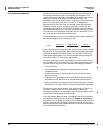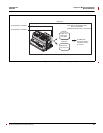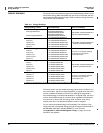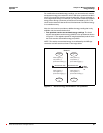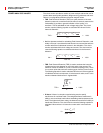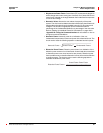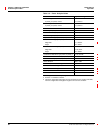
63230-300-212 Chapter 4—Metering Capabilities
April 2001 Demand Readings
61
© 2001 Schneider Electric All Rights Reserved
In nonvolatile memory, the circuit monitor maintains a running maximum for
power demand values, called “peak demand.” The peak is the highest
average for each of these readings: kWD, kVARD, and kVAD since the last
reset. The circuit monitor also stores the date and time when the peak
demand occurred. In addition to the peak demand, the circuit monitor also
stores the coinciding average 3-phase power factor. The average 3-phase
power factor is defined as “demand kW/demand kVA” for the peak demand
interval. Table 4–3 on page 56 lists the available peak demand readings from
the circuit monitor.
You can reset peak demand values from the circuit monitor display. From the
Main Menu, select Resets > Demand. You can also reset the values over the
communications link by using
SMS.SeetheSMS online help for instructions.
NOTE: You should reset peak demand after changes to basic meter setup,
such as CT ratio or system type.
The circuit monitor also stores the peak demand during the last incremental
energy interval. See “Energy Readings” on page 64 for more about
incremental energy readings.
The circuit monitor can perform any of the demand calculation methods,
described earlier in this chapter, on up to 20 quantities that you choose. In
SMS the quantities are divided into two groups of 10, so you can set up two
different demand “profiles.” For each profile, you do the following in
SMS:
• Select the demand calculation method (thermal, block interval, or
synchronized).
• Select the demand interval (from 5–60 minutes in 1–minute increments)
and select the demand subinterval (if applicable).
• Select the quantities on which to perform the demand calculation. You
must also select the units and scale factor for each quantity.
Use the Device Setup > Basic Setup tab in
SMS to create the generic
demand profiles. For example, you might set up a profile to calculate the
15-minute average value of an analog input. To do this, select a fixed-block
demand interval with a 15-minute interval for the analog input.
For each quantity in the demand profile, the circuit monitor stores four values:
• Partial interval demand value
• Last completed demand interval value
• Minimum values (date and time for each is also stored)
• Peak demand value (date and time for each is also stored)
You can reset the minimum and peak values of the quantities in a generic
demand profile by using one of two methods:
• Use
SMS (see the SMS online help file), or
• Use the command interface.
Command 5115 resets the generic demand profile 1.
Command 5116 resets the generic demand profile 2.
See Appendix B—Using the Command Interface on page 181 for
more about the command interface.
Peak Demand
Generic Demand



